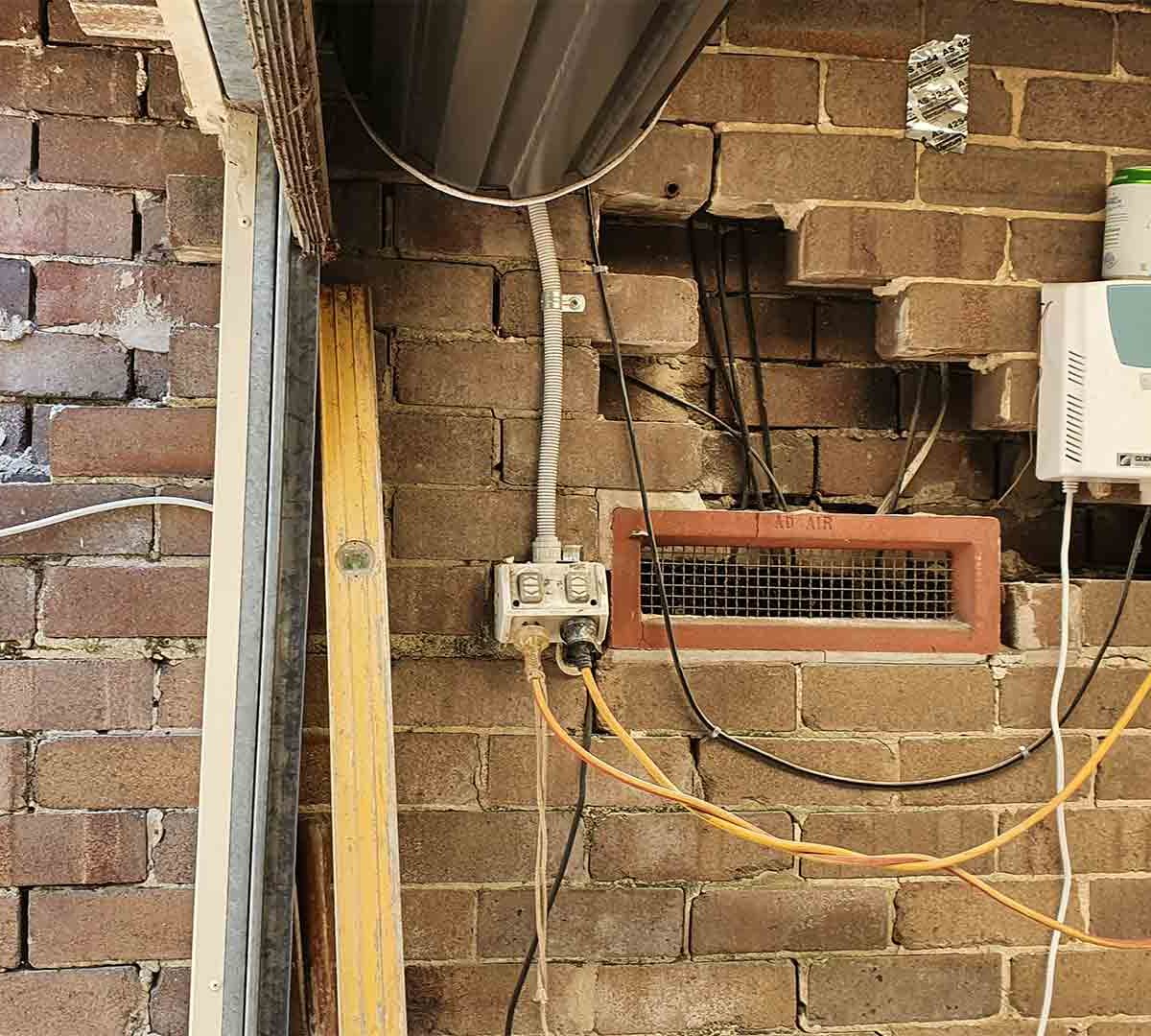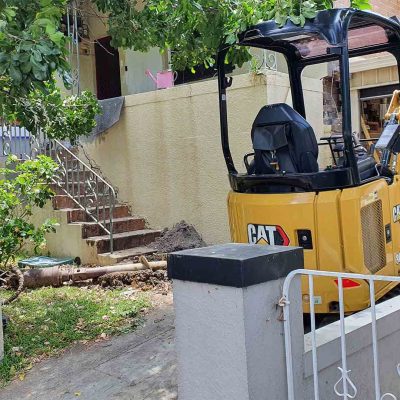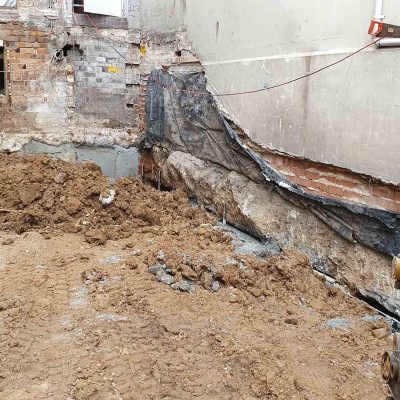Are you a homeowner looking to spruce up your property or someone excited about a big outdoor project? You might be wondering, “What’s the cost of a retaining wall?” Well, it typically ranges from $150 to $750 per square metre. The price depends on the materials used and the size of the wall. Retaining walls are not just practical for preventing soil erosion and managing elevation changes — they can also add a lovely touch to your landscape. However, figuring out the cost can be tricky. It’s influenced by factors like materials, design complexity, labour, and site conditions. So, how much should you budget for your dream retaining wall? Let’s break it down!
What Purpose Does a Retaining Wall Serve?
A retaining wall is like a barrier that holds back soil and prevents it from sliding down. While retaining walls are very practical, many people also use them to make their gardens look nice. If your yard is on a slope, you might need a retaining wall to keep the soil in place. Retaining walls in Sydney become crucial if you want a flat area for a garden, a safe place for kids to play, or if you’re putting in a pool. In some parts of Australia, heavy rains and floods can be a problem in neighbourhoods. Retaining walls help the land do its job and control where rainwater goes on your property.
Retaining Wall Costs Per Square Metre
The cost of a retaining wall varies based on the material, the wall’s size, and the labour involved. Typically, you might need to budget around $5,500 to $10,000 or even more for building a retaining wall. Now, let’s break down the cost per square metre for different materials:
Treated Pine Retaining Wall Cost: The cost for each square metre falls between $250 and $350. If your project is small or not very complicated, treated pine is a budget-friendly choice. It lasts a decent amount of time, but keep in mind it might require extra attention as the years go by.
Treated Timber Sleepers or Hardwood Retaining Wall Cost: For each square metre, the cost varies between $300 and $450. Timber sleepers and hardwood offer a natural and attractive look. They last longer than treated pine and can withstand different weather conditions, making them a popular choice for homes and businesses.
Cost of Retaining Wall Made of Reinforced Concrete Blocks: Usually, the cost ranges from $400 to $680 for each square metre. Reinforced concrete blocks are sturdy and perfect for larger or more complex projects. The added reinforcement makes concrete retaining walls strong, ensuring stability and a longer lifespan.
Sandstone Retaining Wall Cost: The cost per square metre falls between $300 and $550. Sandstone blocks have a fancier and visually appealing look, which is excellent for enhancing your landscaping’s beauty. The price depends on the quality and where the sandstone comes from.
Brick Retaining Wall Cost: If you want to do it yourself, brick retaining walls are the simplest to construct. But make sure to ask your local council if it’s allowed for your project. The cost for a brick retaining wall varies from $250 to $650 for each square metre.
Cost of Retaining Wall Made of Concrete Besser Blocks: You can expect to pay between $550 and $700 for every square metre. Besser blocks, concrete besser blocks, or breeze blocks are a modern and flexible choice for retaining walls in Sydney. They are known for being strong and can be a budget-friendly option for contemporary designs.
In general, the cost of retaining walls can vary from approximately $1,000 for smaller ones to over $10,000 for larger ones. While retaining wall blocks tend to be pricier, they offer durability and long-lasting benefits. Opting for a timber retaining wall is a more budget-friendly choice initially, but it comes with drawbacks like a shorter lifespan and weaker structure. Although materials like concrete, brick, stone, and treated hardwood timber sleepers may have a higher upfront cost, their enduring qualities make them a worthwhile investment over time. The variety of materials available ensures you can choose based on the desired look and purpose of your space.
Things That Influence the Cost of Building a Retaining Wall There are various factors that can influence how much it costs to build a retaining wall. Knowing and considering these factors is important for planning your budget and making sure you have enough money for your project. Here are some things that typically affect the cost of constructing a retaining wall:
Materials
The choice of materials significantly affects how much the retaining wall will cost in the end. Different materials like wood, concrete blocks, natural stone, brick, or Gabion walls come with different price tags. For instance, natural stone and concrete blocks are usually more expensive compared to wood.
Site Situations
The state of the construction site can impact the overall costs. If the land is difficult to build on, like having steep slopes or limited access, you might need special tools, skilled workers, and highly experienced retaining wall contractors, which can increase the expenses.
Foundation Preparation
Getting the site ready correctly is important to make sure the retaining wall lasts a long time. Tasks like digging, levelling the ground, and building a strong foundation can all add to the total cost.
Access
Constructing a retaining wall involves using tools, equipment, and materials. If it’s hard to reach the project site, your retaining wall contractor or builder might need assistance in getting everything there. Additionally, costs can go up if your builder has to carry the equipment and supplies by hand.
Length and Height of the Wall
The materials and people needed for building depend on how tall and long the retaining wall is. If the wall is taller or longer, it requires more resources like blocks or stones and more workers to build it. This leads to higher costs.
Labour Costs
The design complexity, the site’s location, and the builders’ experience affect how much you pay for labour. Skilled work is necessary for making a retaining wall that lasts and looks good, but experienced specialists may cost more.
Drainage System
Having a good drainage system is crucial to stop water from gathering behind the wall, as this could lead to structural problems. The cost might go up due to installing drainage pipes, weep holes, or gravel backfill.
Permits and Regulations
Constructing a retaining wall might require permission from local authorities in different places. Getting these documents involves administrative expenses and, in some cases, engineering plans, which can increase the total cost.
Some Final Thoughts
Enhancing your surroundings with a retaining wall not only adds utility and aesthetic appeal but also plays a crucial role in supporting the soil. The cost of building a retaining wall varies depending on the materials, height, site conditions, and labour costs. Doing thorough research and planning carefully is crucial for a project that works well and is cost-effective.



